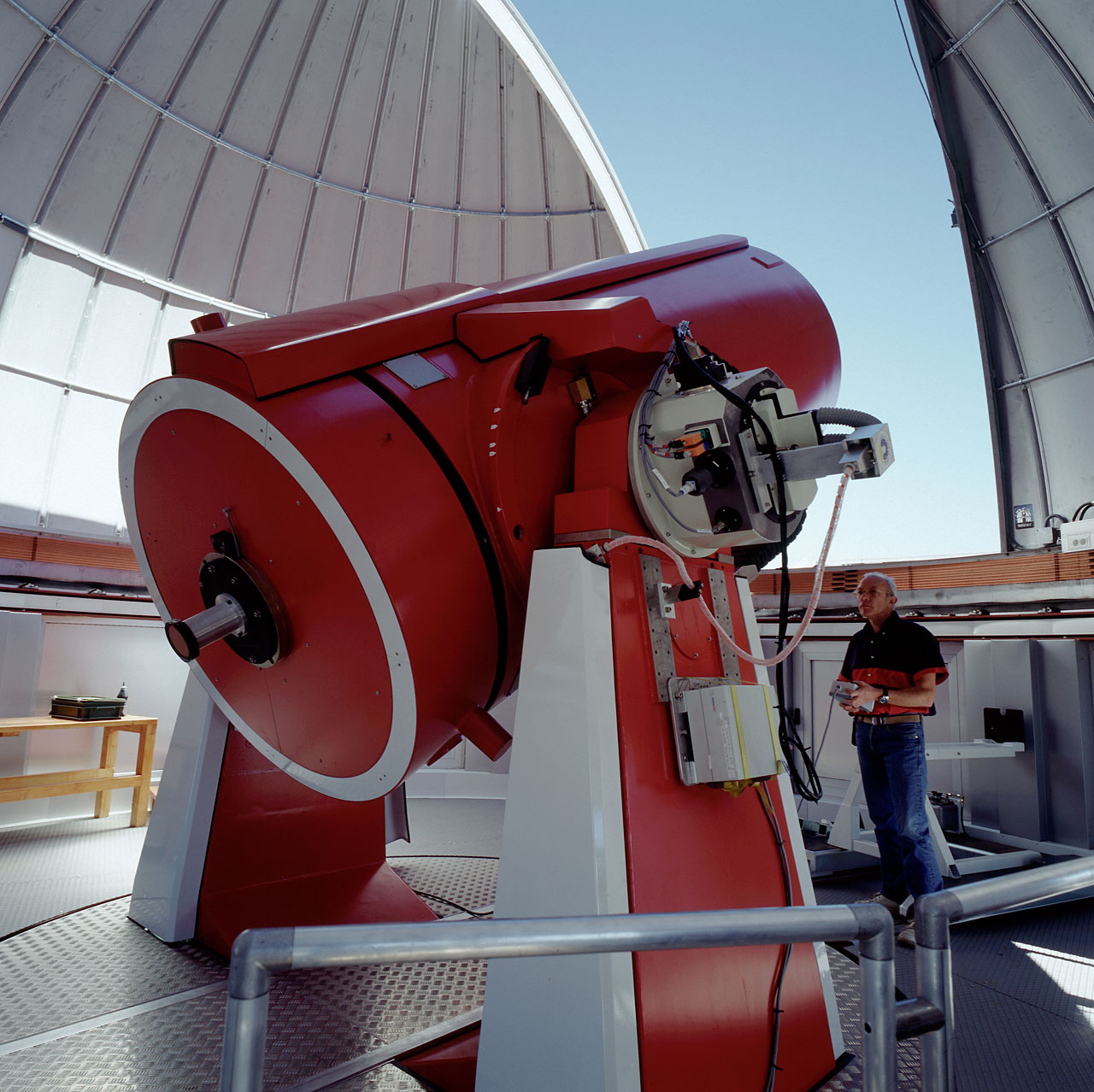CORALIE
Unlike the names of most instruments, CORALIE is not an actual acronym. CORALIE was instead named after the baby daughter of an engineer from the Observatoire de Haute-Provence in France. It was built as a joint project between the Observatoire de Genève in Switzerland and the Observatoire de Haute-Provence in France. It is operated by the Observatoire de Genève and its main goal is to detect exoplanetary companions to southern solar-type stars.
The CORALIE is an echelle spectrograph. By means of an additional cross-disperser the light is redirected in perpendicular directions, and, as a result, the spectral data are displayed as a 2D pattern that can be captured by a 2D-detecting CCD camera.
CORALIE spectrograph was installed on April 1998 at the Swiss 1.2-metre Leonhard Euler Telescope at ESO’s La Silla Observatory. It is used in conjunction with the Leonhard Euler Telescope to conduct high precision radial velocity measurements, to search for exoplanets in the southern hemisphere. CORALIE is capable of measuring the motion of a star with a precision of about 11km/h. Michel Mayor and Didier Queloz organised a team that discovered more than 100 exoplanets with CORALIE (despite the rather modest size of the Swiss 1.2-metre Leonhard Euler Telescope), among other scientific breakthroughs.
The CORALIE instrument is fed by two fibres which allow simultaneous thorium referencing. Its housed in an isolated and stable environment with regulated temperature to guarantee long-term stability of the measurements. The two fibres are connected to the Leonhard Euler Telescope by a front-end adapter.
The CORALIE is an improved version of the ELODIE spectrograph, which was installed at the Observatoire de Haute-Provence. It was decommissioned in August 2006 and replaced by SOPHIE. The design of the much more powerful HARPS spectrometer benefitted from the lessons learned from ELODIE and CORALIE.
Science highlights with CORALIE
- Astronomers announce eleven new planetary companions to solar-type stars (eso0114)
- Eight New Very Low-Mass Companions to Solar-Type Stars discovered (eso0019)
- Exoplanet in double star system discovered (eso9855)
CORALIEThis table lists the global capabilities of the instrument.
|
